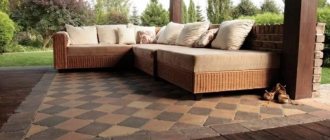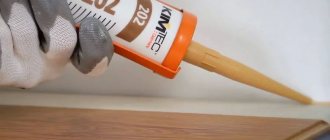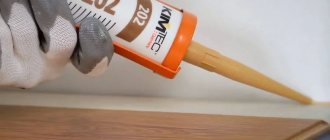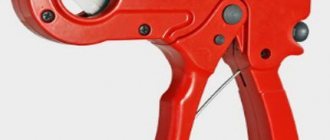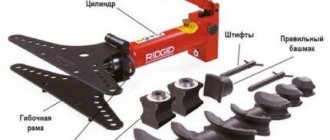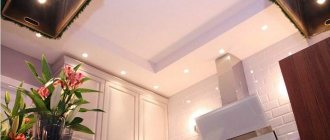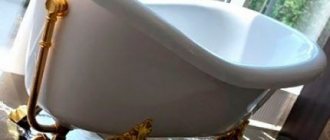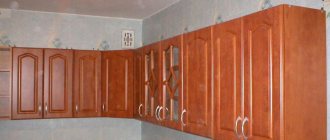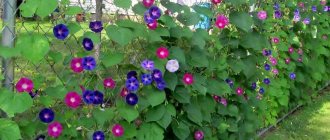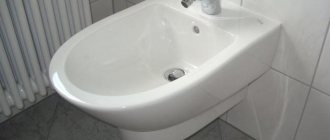One of the most labor-intensive jobs in a summer cottage is weed control. Parasitic plants take away nutrients from garden crops. As a result, the latter reduce productivity, get sick more often, and in some cases may even die. To control weeds, both mechanical methods (weeding) and chemical methods (herbicides) are used. Both of these technologies are quite effective, but have a number of disadvantages.
Weeding is a time-consuming procedure, and chemicals can accumulate in plant tissues, which makes their fruits hazardous to health. Meanwhile, there is a technique that allows you to reduce labor costs when growing garden crops and at the same time eliminate the possibility of the negative impact of herbicides. Modern enterprises have begun to produce special black weed control film. This material is relatively inexpensive and can save a summer resident a lot of time and effort.
Does black film help with weeds?
Using this material is quite simple. In spring it spreads out on the ground. Next, holes are made in it for planting plants. One of the features of black film is that it does not transmit sunlight at all. As a result, weeds that do not receive ultraviolet light stop developing.
In Europe, film and roofing felt have been used for weed control for a long time. Moreover, this is done not only by private individuals, but also by large farms. In this part of the world, black film is considered to be very effective against weeds. Many domestic gardeners also speak well of this method. But some summer residents are still skeptical about this technique. So, does black film help control weeds? Let's look at this in more detail.
Folk ways to eradicate grass
Among summer residents and gardeners, improvised means of controlling weeds are very popular. For example, boiling water, burning with fire using a blowtorch, and watering weeds with a solution of water and vodka are widely used. To destroy grass between paving slabs, spray with a mixture of vinegar (200 g), salt (20 g) and water (600 g).
Grass tends to grow much faster than cultivated plants. Closed beds will look quite aesthetically pleasing. And flower beds covered with tree bark or walnut husks will add zest to the landscape design of the site. You can cover the soil to prevent grass from growing using almost any available means. The main thing is that they do not allow light to pass through, but allow the soil to breathe and maintain water permeability.
What processes occur under the film?
Weed control with black film can actually be quite successful. The edges of this material lying on the ground are usually covered with soil. As a result, a special microclimate is created in a garden bed mulched in this way. The soil under the film warms up very quickly. Therefore, weeds accelerate their development at the first stage. However, when germinating, the grass rests against a film heated by the sun. The result is the death of the surface part of the plant. After some time, the roots of the weed also rot.
The use of non-woven material when constructing paths
To ensure that paths laid throughout the garden always have a neat appearance, it is necessary to use mulching covering material. This canvas will prevent weeds from growing between the individual elements of the path. Since non-woven fabric is capable of transmitting water, you will not find puddles on the path after rain. All moisture will be absorbed into the soil, passing through the mulching material. After excavating the soil, the bottom of the trench is leveled and compacted. Then they spread spunbond, agrospan or another inexpensive type of covering material, covering it with crushed stone, bark, expanded clay, decorative stone or simple gravel. The trunk circles of fruit trees are decorated in a similar way.
Correct design of the trunk circle of a fruit tree. To prevent grass from breaking through from under the layer of crushed stone, you must use mulching non-woven material
Wherever there is a possibility of unwanted grass sprouting, it is necessary to lay a black non-woven covering material. This will solve the problem of weeds once and for all. Proper use of non-woven covering fabrics increases the attractiveness of the site.
Where can I use it?
The use of black weed film (photos of such beds are presented on the page) is allowed both in open ground and in greenhouses. Very often this material is used for the development of virgin lands. In this case, the film is laid directly on top of the weeds and left there for a long time (1-2 months). As a result, the grass rots along with the root system. The soil under the film becomes loose and easy to work. Subsequently, even in the absence of film, weeds in the area do not grow as actively.
Getting rid of grass and weeds between paving slabs
We lay paving slabs for a reason. Firstly, it is beautiful and clean during bad weather. And secondly, there is no unnecessary vegetation. But it turns out that she still makes her way between this beauty. How to deal with this?
There are several simple ways:
1. Salt. It can be used both in dry and liquid form. For the first method, just lightly moisten the grass and sprinkle with salt. Or dissolve 0.5 cups of salt in a bottle of hot water. Using a sprayer, spray all tile seams. The grass will first turn yellow and then dry out completely.
2. Salt and vinegar. For this solution we need to pour 150 grams into the bottle. salt and pour 1 liter of vinegar 9%. Add about 1 tablespoon of any liquid detergent (dishing liquid or soap) there. Shake well and treat all seams overgrown with grass.
3. Soda. Make a 5 liter solution. water 3 tablespoons of soda and 1 spoon of detergent. We water the weeds with this solution and wait for the result. If necessary, the procedure can be repeated without harm to the soil.
Such methods are quite effective and simple, because everyone has these products at hand. But the paving slab area will always delight you with its well-groomed appearance.
Benefits of use
Thus, weed control with black film can reduce labor costs in the garden, greenhouse or nursery. Compared to conventional methods, this mulching technique also has the following advantages:
- early warming of the soil in spring;
- better heat retention by soil in winter;
- reduction of irrigation costs;
- no need for loosening;
- acceleration of plant development.
Since the black film is an airtight material, the soil underneath it warms up very quickly. Therefore, plants in the spring with such mulch begin to develop at an accelerated pace. This material also reduces the risk of crop death during recurrent frosts.
The film does not allow moisture to pass through. Therefore, you can water plants in beds covered with this material less often. As moisture evaporates, in this case it condenses on the film and flows down again. This material is more convenient to use than many other types of mulch. All that is needed in this case is to spread the film over the area once.
Also, the advantages of using this material include the fact that, unlike organic matter, mold almost never forms under it. The air entering under the film through the holes made is quite enough for this.
Agrofibre in gardening
Using this unique material, you can significantly simplify the process of growing a wide variety of flower, berry and vegetable crops. The use of geofabric can increase productivity and significantly reduce the labor intensity of work. This will allow you to spend more time enjoying a pleasant holiday or doing other housework. By preventing weeds from developing, the canvas ensures the safety of fertilizers and free access of water to the roots of cultivated plants.
Geotextile fabric can be used in gardening and landscape design in the following ways:
- To create and maintain a fertile layer. This decision is made in areas where the soil is extremely poor and is not intended for cultivation. Large areas are covered with canvases, which are covered with fertile soil. Agrofibre prevents mixing of good and poor soils, washing away soil and fertilizers. Weeds will be reliably isolated from cultivated plants by a dense layer of cross-linked polypropylene.
- To limit the growth of shrub roots. The roots of berry and flower plants can reach several meters in diameter. This is fraught with damage to paths, lawns and flower beds. To prevent this, the bushes are closed in a limited space. To do this, a hole is dug, the bottom and walls of which are reinforced with geotextile. A bush and fertile soil are placed in a reinforced pit.
- For growing berries. Immediately after the snow melts, the beds are covered with a continuous layer of geofabric. Due to lack of access to sunlight, all weeds die. When the time comes for planting, cross-shaped cuts are made in the fabric into which the seedlings are immersed. This way you can successfully grow peppers, tomatoes and strawberries without wasting time on endless weeding.
Polypropylene sheets can protect plants from sudden temperature changes. It is enough to cover the lawn with geofabric. It will protect plants from scorching sun rays and night cold.
Disadvantages of use
Of course, such material has not only advantages. Most gardeners consider the main disadvantage of using black weed film to be the inability to replenish the soil in the beds. Organic mulch is usually dug up in the fall, which increases the humus content in the soil. The film does not have this advantage.
In addition, spreading it on the ground is quite a troublesome task. In addition, this material is also quite easily damaged. The film on the beds has to be replaced after just a few years. This procedure is also quite labor-intensive. This is especially true for perennial plantings. Indeed, in this case, when disposing of the film, you need to try not to damage the plants.
In virgin lands, this material is also sometimes impractical to use to remove weeds. Usually only fairly soft grass rots under the film. Tough weeds often cannot be eradicated in this way. After all, sometimes for such grass even, for example, asphalt is not an obstacle.
Preventing the appearance of weeds
Today there are a huge variety of methods to combat unwanted grass. Most gardeners resort to the mechanical method, i.e. weeding by hand or using appropriate tools. This method, although simple, is ineffective. To prevent grass from growing between the tiles, they begin to fight it at the stage of laying the finishing material. They do this using different methods.
Geotextiles
When finishing garden paths, geotextiles are laid at the bottom of the trench. Afterwards, a layer of sand, gravel and crushed stone is poured onto this material. Having prepared the base in this way, begin careful compaction and only after that lay the tiles or paving stones. Following this technology, you can get rid of grass for at least 20 years, which corresponds to the service life of geotextiles.
Polyethylene
By analogy with geotextiles, you can use polyethylene film. It is laid on the bottom of the trench in two layers, after which the remaining layers are laid. Polyethylene also copes well with the task, but its service life is much shorter than the previous material.
Ruberoid
Ruberoid is a thick paper that is impregnated with bitumen. This impregnation prevents the material from rotting. Ruberoid performs well as a kind of barrier and will last for several years. However, this material has one feature - before laying it on the bottom of the trench, the surface must be carefully leveled to avoid tearing.
Paper
You can also place cardboard or newspapers under the tiles. However, such materials, despite their availability and low cost, have a short service life.
The option with concrete is especially relevant if the site has a high groundwater level or if there are plans to develop a site for a car. Not a single weed can penetrate such a base under the tiles.
What to look for when purchasing material
Protection against weeds with black film will be effective, of course, only if it is chosen correctly. Many companies produce this covering material today. At the same time, the black mulching film itself may vary in technical characteristics.
When choosing this material, you should pay attention first of all to its thickness. A thin film is only suitable for warming the soil in spring. Actually, for mulching, you should take material that is stronger, more durable and thicker. Perennial crops, for example, strawberries, are usually protected from weeds with a 100-micron black film. It is not advisable to use thicker material even in this case. A very thick film is expensive and is mainly suitable only for construction work.
If annual crops are to be mulched, fairly thin material can be used. In this case, the 80 micron option is most often used.
How to cover the soil to stop grass growth
Weeds significantly complicate the cultivation of fruits and vegetables. It is recommended to cover the ground with covering material in order to grow crops.
- Use an opaque material to prevent grass from growing. Cardboard, black film, and roofing felt are suitable for covering. You can also lay boards, cover them with agrofibre or crushed stone.
- Cover with 5-10 cm of organic mulch. Mown green plants, sawdust, nut husks, and tree bark will perfectly cover the soil and prevent the growth of weeds.
How to lay black weed film
Technologically, laying this material is a simple procedure. However, there are some rules to follow when performing this operation. You can lay the film on the ground only after the soil has warmed up well enough in the spring. The area must first be cleared of debris and dirt. Most attention should be paid to sharp objects that can damage the material - dry branches, glass, stones. If there are already weeds on the site, it is advisable to remove them.
The film should be spread in such a way that it fits as tightly as possible to the soil surface. In those places where air “bubbles” remain, weeds may subsequently begin to develop. Of course, they will not grow too actively, and their color will not be green, but white - but still.
After the material is laid out on the ground, its edges should be pressed down with some kind of weight. This could be, for example, stones, bricks, or even just soil. Next, cross-shaped or slot-shaped holes are made in the film for planting plants. Round or square slits should not be made. Experienced summer residents have noticed that with this method of cutting, the plants subsequently develop worse. The distance between the holes is selected depending on the type of garden crop. For example, for strawberries this figure will be 30-35 cm.
As soon as shoots appear on the bed covered with film, several semicircular holes should be made in the material on the south side. Without normal air exchange in the soil, plants are known to develop worse. In addition, in this case, acidification of the soil may occur. The holes will provide air access under the film. In addition, if they are present, the soil under such covering material will not overheat too much.
Black agrofibre or two-tone material?
Amateur gardeners, as well as farmers who grow fruits and vegetables on a large scale, are freed from the need to purchase and use herbicides against weeds. They also don’t have to spend time at their summer cottages with hoes, spending a lot of physical effort and time on weeding. There are simply no weeds. Only useful crops grow in even rows.
In addition, the fruits remain clean after rains, since they do not come into contact with the ground. Strawberries grown on beds covered with agrofibre can be harvested immediately after rain. The berries lie on a dry cloth and have an excellent presentation. They can be served on the table, lightly rinsed from dust, or taken to the market for sale. Using black mulching agrofibre, you can achieve earlier ripening of the crop. It is possible to reduce the growing time of crops to two weeks by early warming up the soil under cover.
The use of mulching agrofibre eliminates a large amount of work on caring for plantings in the garden, since there is no need to weed the beds
An interesting new product has appeared in the range of covering materials - two-color mulching agrofibre, which is superior in functionality to conventional black canvases. The manufacturer has improved the product by combining two thin layers of white and black. As a result, the covering material is black on one side and white on the other. The dark side of the canvas is laid on the ground, and the light surface is on top and reflects sunlight that falls on plants and fruits from below, accelerating their growth and ripening.
Important! The white surface of the mulching two-color agrofibre prevents the root system from overheating, which affects the growth rate of crops grown on the site and the uniformity of fruit ripening.
Reviews from summer residents
About 20 years ago in Russia there was a real boom in the use of black weed film as mulch. However, subsequently many gardeners abandoned this method. This was explained primarily by the fragility and not very good quality of the film produced at that time. Today, many gardeners are returning to film covering technology. Summer residents consider the main advantage of this technique, of course, to be the opportunity to refuse weeding. Also, many gardeners attribute the advantages of black film to the fact that when using such material, fruits do not get dirty on the ground.
This mulch, according to most gardeners, is best suited for strawberries and cucumbers. Black film also works well against weeds, reviews of which on the Internet are actually mostly positive, when used for tomatoes and zucchini.
The disadvantages of this covering material are considered by summer residents to be largely the fact that when using it it is difficult to maintain crop rotation. After all, the slits in the film are made at a certain distance from each other. And what is good for one culture may not be suitable for another. It is for this reason that the film usually has to be changed at least once every three years.
The best way to mulch the soil to prevent weeds from growing
The creation of a protective coating should be preceded by cleaning the soil from weeds (perennial and large) and enriching it with ash, bone meal or other slowly decomposing fertilizers.
They mulch the soil with anything: fallen leaves, mown grass, moss, straw, black film, geotextile... All this, of course, is good, but there is one more material that is often forgotten, but in vain.
We are talking about wood chips. What is it good for? Firstly, wood chips reduce the evaporation of moisture from the soil surface by about 15-20 percent. By covering the soil with a layer of 8-10 cm, we can significantly reduce watering in the summer.
The snow that fell this week in many areas of the region is not a hindrance for mulching with wood chips.
Wood chips are a good heat-insulating material. There is an even temperature regime under it: the soil does not overheat and does not crack. In the fall, it retains heat longer, giving plants more time to prepare for winter. In winter, wood chips protect the roots from frost. In spring, the ground under the mulch warms up more slowly, and, accordingly, the regrowth of leaves and shoots is delayed. However, in our area, where spring frosts are so frequent, this is only beneficial.
But not all wood chips can be used as mulch. For example, birch or oak chips have certain limitations in their use for mulching related to their chemical composition. It contains tannins that can slow down plant growth. Therefore, it is better not to use mulch from wood chips in garden beds; other materials are needed here, but coniferous plantings (spruce, thuja, cypress, etc.), which are not afraid of the tannic influence, noticeably increase their development due to the acidification of the soil on which they grow by the bark .
For coniferous plants, in the interests of improving nutrition, it is quite possible to mulch the soil with compost annually.
A serious argument in favor of mulching with bark is its combination of good thickness compared to almost weightless lightness and a high content of phytoncides that cleanse the environment of unwanted microorganisms and insects.
Bark mulch makes the tree trunk look natural.
In winter, under a blanket of crushed branches, not only the roots are comfortable. The biological activity of the soil increases sharply. For example, the number of useful underground inhabitants such as earthworms increases 4-5 times. The soil becomes more “alive”, and therefore, such mulch helps to reclaim areas that have been depleted and disturbed as a result of human carelessness and activity.
If you fill the paths with wood chips, the soil will not be compacted and washed away by rainfall (which, by the way, is important for areas on a slope). Water does not stagnate under your feet, and the house is noticeably cleaner.
Another advantage of wood chips: mulch from it prevents the growth of weeds, especially annual ones, and Roundup will help fight rhizomatous weeds.
In order for wood chips to show all their advantages, its layer must be at least 7-10 cm, otherwise the effect will be weaker. So, if you still decide to save on mulch and get by with a layer of 2-3 cm, then be prepared that you will not get rid of weeds, and if you pour too much, this can also negatively affect the plants around which it is poured .
Can all plants use mulch? In rock gardens, around bearded irises and in general all xerophytic (dry-loving) plants, wood chips will only cause harm. But daylilies, hostas, astilbe, phlox, bluebells, Siberian irises, dahlias and many other flowers will be grateful for that slightly prickly woody blanket with which a caring owner will wrap their “heels”.
And it is also very important to remember that when feeding plants under wood chip mulch, they use conventional complex fertilizers, while increasing the dose of phosphorus, and not nitrogen, as is usually done with quickly decomposing mulch materials. Wood chips decompose slowly and are “renewed” every four years.
Published: newspaper No. 199 (4490)
It's time to pay attention to the grapes
Recipes for fresh vegetables
How to store
If black weed control film is used on perennial crops, it is usually left directly on the beds over the winter. If the material was used as mulch, for example, for cucumbers or zucchini, it is, of course, better to remove it in the fall. Manufacturers and experienced gardeners recommend storing the film wound on a round stick. The material should first be wiped with a cloth. The resulting roll should be kept in a dark, dry room in winter at an air temperature of 10 °C. This storage method can significantly extend the service life of the material.
Choose plants that will replace each other
Plan your flowerbed in such a way that the plants bloom for as long as possible, throughout the season, or replace each other. As a rule, these varieties are easy to propagate plants that will grow little by little, which is convenient if you need a large, lush flower bed or a flowering lawn in front of the house.
Perennial flowers that bloom all summer include:
- Petunias.
- Calendula.
- Armeria seaside.
- Marigold.
- Astilbe.
- Astrantia.
- Heliopsis.
- Blue delphinium.
If you choose perennials, you will save yourself the trouble of removing faded varieties in the fall and planting something to replace them in the spring.
Instagram: @elenalimonchenko Instagram: @lenuk_pleshkova
5 successful plant combinations for a spectacular flower bed
How to remove moss from garden paths
But not only weeds settle in tile joints. Moss often appears there, as well as in places hidden from sunlight by the dense crown of trees. This occurs due to improper track drainage.
Moss can be removed mechanically. Fallen leaves and debris are removed from the path, and ordinary sand is sprinkled on top. Prepare a soap solution: dissolve a piece of laundry soap in a bucket of heated water. Then use this mixture and a broom to clean the path. The sand here serves as an abrasive, and the soap solution as a herbicide.
For greater efficiency and to consolidate the result, water the path with vinegar dissolved in water (1:1).
There are many ways to get rid of weeds on garden paths. However, it is unlikely that this will be done completely - the grass will appear again from time to time. Therefore, in this difficult struggle you will have to show perseverance and patience!
How to get rid of grass on your property (lawn)
Sometimes you want your yard to have a perfect lawn without a single weed. What can we say about the site itself? After all, it is almost impossible to remove weeds forever. Even herbicides help only temporarily. But even then, you don’t always want to use them. But what to do if there are so many of them, but there is practically no strength and nerves. The most accessible methods will come to our aid.
1. Herbicides. This is the fastest and most effective way. There are now a sufficient number of them in stores and they are all divided into two types:
- contact - act at the point of contact with the poison;
- systemic - when the poison gets on the plant, it penetrates into the underground part of the weed, that is, into the root. After which the plant dies completely.
According to their action, they can also be divided into those that:
- selective action;
- continuous action.
The only difference between them is that the latter destroy everything they come across and nearby. They will even destroy bushes and all the cultivated plants that you have planted. They can be used if you need a clean field without a single blade of grass.
2. Mechanical. The process involves digging, cutting or pulling out weeds. This is also an effective method, but quite labor-intensive. The area will have to be processed several times in this way. After all, not all grass sprouts at the same time. Also, the root of some weeds cannot be completely removed because it is very large. And even from the remainder of a small part in the ground, the plant will still germinate. Also, mowing the lawn is not effective, since along with the weeds, you also cut off the ornamental grass.
3. Mulching. This is a very effective, but at the same time long method. The fact is that the soil is covered with any material: agro-film, crushed stone, bark, leaves. This cover deprives the soil of sunlight, due to which photosynthesis does not occur. Consequently, a plant without light simply does not develop and dies.
The downside is that the whole process should take more than a year. In the spring you cover the soil and only remove the material the following summer. The result will amaze you! But its advantage is that moisture and heat are retained for a long time.
4. Folk. Previously, people actively used this all the time. And this also helped a lot. After all, everyone has salt and vinegar in their kitchen. You just need to act carefully so as not to touch our lawn and crops on the site.
You can sprinkle salt on slightly moistened grass or make a solution from it: 1/2 cup salt, hot water, a few drops of liquid soap. Spray the plants with a spray bottle.
Table vinegar is usually used. Mix salt (125 g), dishwashing liquid (1 tablespoon) and vinegar (1 liter). Also sprayed in the morning. It is advisable that the weather be dry and hot, then the result will be faster and better.
See, it's quite simple. The main thing is to take precautions when using harmful substances. Such methods will help you use your time not only for grass, but also for your favorite activities.
Use plants in containers
A simple way to arrange a flower bed without complicated transplanting and care is to place containers with mature plants in the garden. This can be done openly by choosing beautiful planters and placing flowers everywhere, including on hard surfaces.
Containers can also be buried in the ground. This is easier than replanting, and the roots of the flowers will be protected from diseases and parasites. If necessary, the containers can be easily dug up and moved to another part of the garden - you will not be able to do this with ordinary plants in the ground.
If you are used to preparing flower seedlings at home and then transplanting them into open ground, you should still think about containers. There are options made from compressed cardboard, which, when lowered into the ground, will gradually soften and decompose. This is environmentally friendly and simplifies the replanting process.
Grass between the beds. How to get rid of it?
Throughout the summer season, gardeners spend a lot of time weeding. From early morning until late evening, they fight weeds with hoes or simply with gloved hands. But it’s impossible to remove them completely. After all, they grow again and again. In this case, there are several options for how to get rid of grass.
1. This is mulching again. It can also become a decoration for your garden. If your beds are fenced and there are permanent ones, then this will only simplify everything for us. After all, you can simply fill the paths with concrete or lay out paving slabs. But I agree that it is very expensive. Then we do it easier and fill it with pine bark, straw or leaves. You can also use dark synthetic material. All this will prevent the sun's rays from penetrating and feeding unnecessary plants. Therefore, they will soon die completely.
2. Classic. This option is used by the majority and constantly. The process is that the weeds need to be dug up with a pitchfork. It will not be possible to get rid of all the grass, because it sprouts every day.
You can also simply mow it between rows as close to the root as possible. Then the plant will get sick, since it spends a lot of energy on the growth of new leaves. This means that all nutrients from the roots will be spent on restoration. Therefore, the more often you mow, the faster the weed will die completely.
3. Chemical. This is the most dangerous option. After all, herbicides are poisonous and therefore harmful. You need to act according to the instructions and very carefully so as not to get on our cultivated plants.
4. No empty spaces. That is, the more you plant, the fewer paths. And from this it is concluded that there will be much less grass. You can also mix plants: annuals with perennials. Or, in addition to those that take a long time to grow, you can add those that ripen quickly. Therefore, they can be replanted.
These are quite effective methods, but they also take time. But maybe in some places it’s worth not paying attention to weed. Let her grow and her nerves will be fine.
How covering materials are used
Using covering material against weeds
After purchasing geotextiles, you need to use them correctly. Step-by-step instructions on how to use covering material for plants against weeds:
- Before starting work, it is important to clear the ground of weeds. To do this, dig deep, apply herbicides, and keep the area fallow or green manure for a year.
- Fill the soil with fertilizers and level the surface.
- Cut the geotextile to the size of the bed, make allowances for joints of 15–20 cm.
- Cut cross-shaped or circular holes for the plants.
- Spread the covering geotextile lengthwise (it is more convenient to lay it on a windless day).
- Place the edges formed by the allowances in small grooves, cover them with earth or press them down with stones (more suitable for windy, unprotected areas).
- Additionally, mulching material is attached to the surface using wire pins 8–10 cm long.
- After fixing, plant seedlings and seeds in the prepared holes.
Color
Participant kler26 writes the following: “Has anyone used black agrofibre to cover the ground in garden beds to prevent weeds? I had some trouble with him. Maybe I'm doing it wrong. I only water each hole; the water washes away the soil, leaving bare roots. That's why I add soil regularly. The weed also grows under the fiber. you have to stick your hand in and somehow pull them out - it’s very inconvenient. In addition, the fiber periodically pokes out from under the ground, so you have to crawl and cover it with new ones. I thought it would be easier with him, but something turns out to be more troublesome.”
The canvases differ in color, which is also chosen in accordance with the area of application. They are suitable for the following purposes:
- Black. Used in cold regions. They attract sunlight, so the soil warms up faster. Even before planting the plants, the beds are lined with material. After 1-1.5 weeks, the soil becomes suitable for sowing.
- White. Reflects light, preventing weeds from developing. Slots are made in the canvas for plants. Shoots located above the material receive more light.
- Black and white. The canvases are white on one side and black on the other. They are spread directly onto the beds. The black side faces down. This prevents grass from growing. The white side reflects the sun's rays, preventing overheating of the soil and plants. The material is used for vegetable gardens in warm climates. You will need to water and weed the beds less often.
- Green. It is used for near-trunk decoration and for mulching the soil. Creates a beautiful landscape near the house and prevents the germination of weeds.
